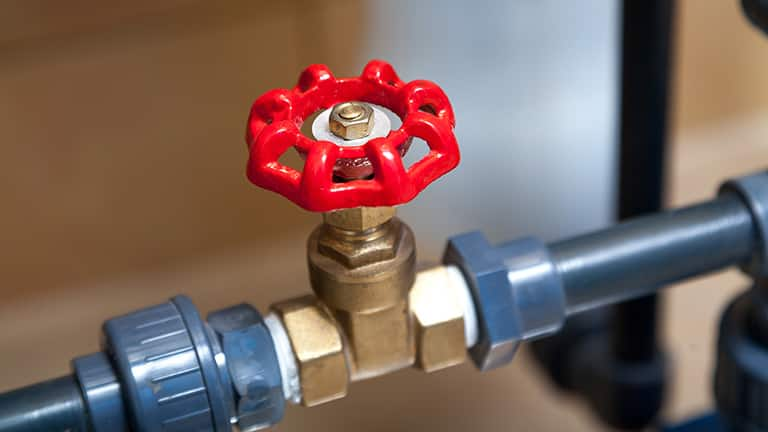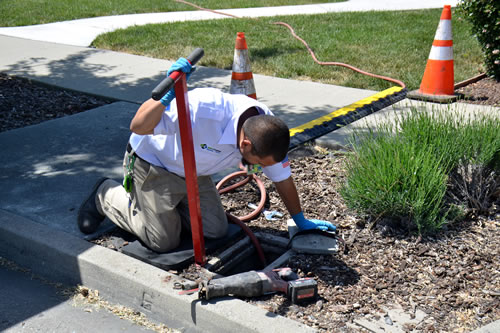Essential Arguments for Why You Should Know Your Water Shut-Off Valve Locations
Essential Arguments for Why You Should Know Your Water Shut-Off Valve Locations
Blog Article
We have stumbled on this post relating to 3 Tips To Prevent Water And Storm Damage down the page on the net and thought it made sense to relate it with you in this article.

The plumbing system of your house is a detailed network of pipes as well as shut-off valves. The latter is utilized to manage the water's flow into the pipelines throughout the whole home. In case of an emergency, you can cut the water using the shutoffs. This protects against considerable water damage from occurring.
Why Must I Worry About This?
Your washroom sink is defective, so you can readily discover the shut-off shutoff below the sink. For significant leakages, you have to close the mainline shut-off valve.
The longer you wait to shut the shut-off valve, the much more extensive the damages will certainly be. You might not have adequate time to figure out exactly how to shut the valves when you're worrying amidst an emergency.
What Does the Shut-Off Valve Appear Like?
This is typically a knob that permits you to shut off the water for a details home appliance, a local area (as an example the entire second flooring), or for the entire home. It is vital to recognize where these valves are, so when something surface in any location of your residence, you can shut it as soon as possible. This will assist you avoid substantial water damage that will cost thousands to fix.
Where are These Found?
Your best wager is to call a water remediation services business for guidance. If you have a fairly moderate-sized residence, try looking for a handle or lever.
If you have a home assessment report from when you got your home, it needs to be indicated in those papers. If you built it from scrape, it ought to be in the blueprints. Commonly, contractors mount the shutoffs near or within the main, ground-floor washrooms. Although the valves are expected to be visible, some select to camouflage them for visual factors.
When to Call a Specialist?
Should the aforementioned hold true for your local valves, you have no other option but to shut down the main water line, cutting the resource of water in your whole house. After that call the plumber to inspect the problem and also turned off the shutoff in that area just so you can utilize the remainder of the plumbing in other locations of your home.
Remember, these shutoffs are lifesavers and also important for any plumbing repair work. If you detect any leakages to prevent further damage, you can turn them off. Since of a ruptured pipeline, your home can obtain swamped not just with all-natural calamities however. In the event of a plumbing emergency, closed down these valves to prevent complications that call a trusted water damage repair supplier.
The plumbing system of your house is an intricate network of pipelines as well as shut-off valves. In the occasion of an emergency, you can cut the water making use of the valves. The longer you wait to shut the shut-off shutoff, the a lot more extensive the damages will be. It is essential to understand where these valves are, so when something plants up in any type of area of your residence, you can close it right away. In the event of a plumbing emergency, shut down these shutoffs to stop issues that call a reputable water damages reconstruction service provider.
How to Shut Off Water Valves
The Shutoff Valve to the Water Supply for an Individual Plumbing Fixture
To stop the flow of water to a specific appliance such as a sink, check the pipes for the nearest valve; it will likely be made of chrome and located directly below the fixture. Many showers and sinks have two valves for hot and cold water respectively, so make sure to turn them both off. Appliances like dishwashers, How to Shut Off Water Valveswashing machines, and refrigerators sometimes have switches, rather than valves, on the hoses connecting them to the wall. Water heater valves are usually located on the pipes above.
When it comes to which way you should turn the valve, keep in mind the old saying “righty tighty, lefty loosey.” In other words, turning a valve clockwise, or to the right, will restrict the flow of water while turning it counterclockwise, or to the left, will allow water to flow. If you have trouble turning the valve, wear a work glove to get a better grip, or use a wrench. Once you turn all of the valves clockwise as far as they will go, the water supply should be successfully shut off.
Before you start making repairs, have a bucket nearby so that you can drain any water that was left over in the pipes. After you finish the job, turn the valves counterclockwise as far as they will go to restore the water flow.
The Shutoff Valve for the Main Water Supply to Your Home
The first step is locating your main shutoff valve. You probably have a brass valve with a round handle near the area where water enters your home. It could be located in your kitchen, a utility closet, a downstairs bathroom, or even on an outside wall. Turning the valve clockwise as far as it can go should shut off all of the water fixtures in your home; however, you’ll need to turn on all faucets to empty any water left remaining in the pipes. Let your sinks and showers run until all water flow ceases, and then turn all faucets to the off position. After finishing your repairs or installations, turn the main valve back counterclockwise.
The Shutoff Valve for the Water Supply to Your Entire Property
Before you do anything, call your water company and ask for permission to access your street shutoff valve. If your home’s main water valve fails or needs replacing, you must turn off the water supply to your whole property before attempting repairs. You’d also need to do this before trying to fix a leak in the pipes connecting your home to the street valve. The shutoff valve for the property is usually located in the same metal box that contains the water meter. Remove the box cover and look for a handle; you might need a long wrench to reach it.
Different cities have different types of street valves. Ball valves have long, thin handles while gate valves have more rounded handles. A ball valve handle will usually be aligned with the pipe while open; turn it 90 degrees to the right to turn it off. Gate valve handles should be turned clockwise as far as possible to stop the water flow.

I ran across that piece of writing on 3 Effective Methods to Protect Your Home for Potential Water Damage while exploring the search engines. Appreciated our write-up? Please share it. Help somebody else locate it. We truly appreciate reading our article about 3 Simple Approaches Against the Shower and Shower-based Water Damage.
Show Details Report this page